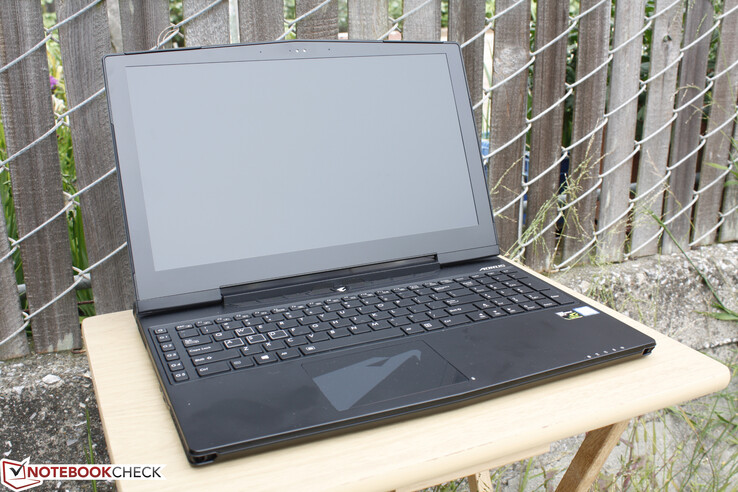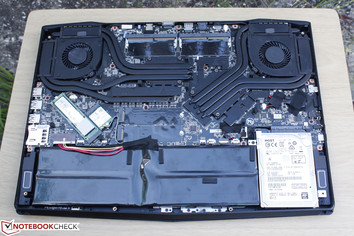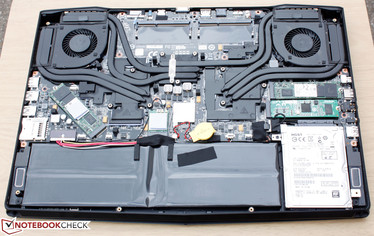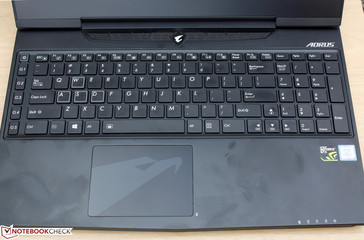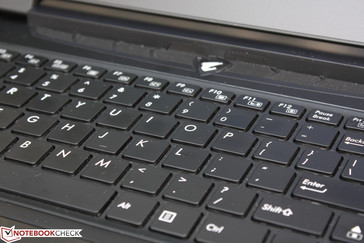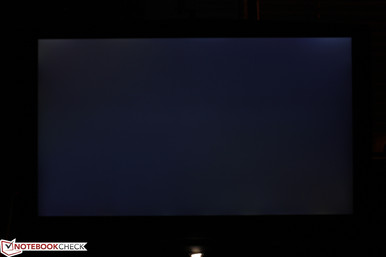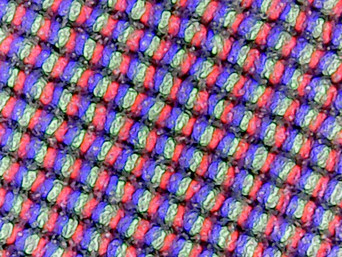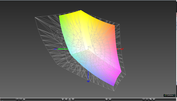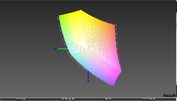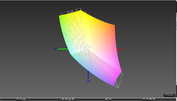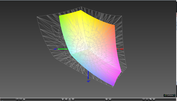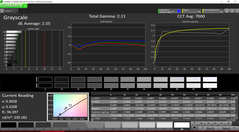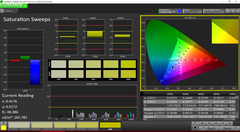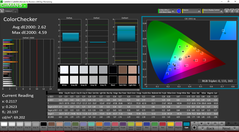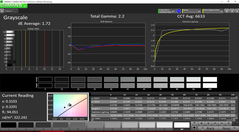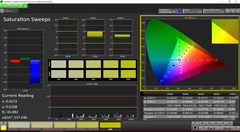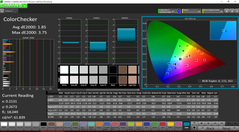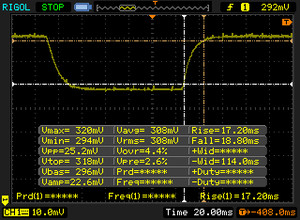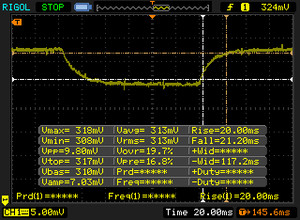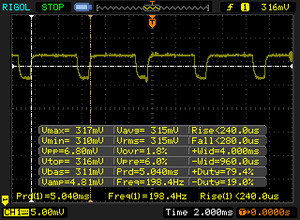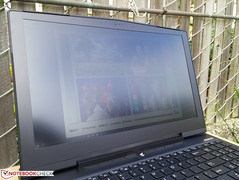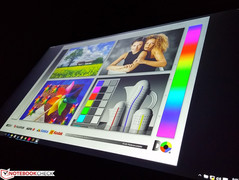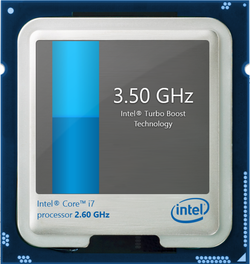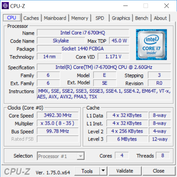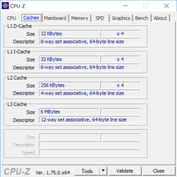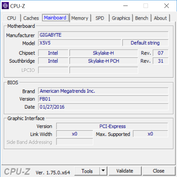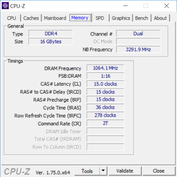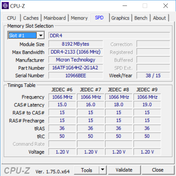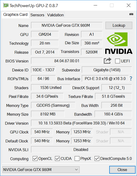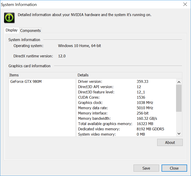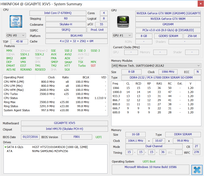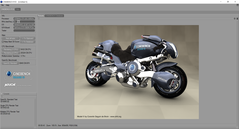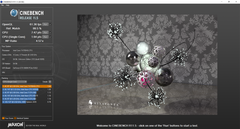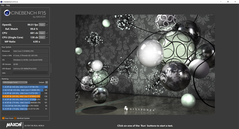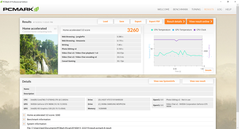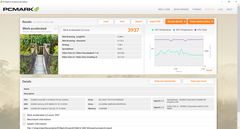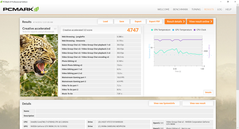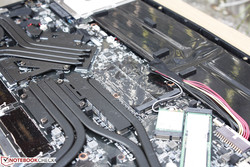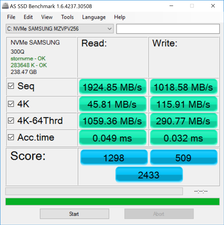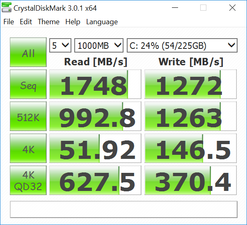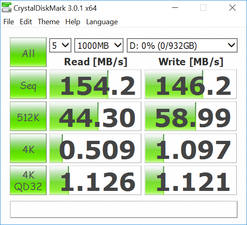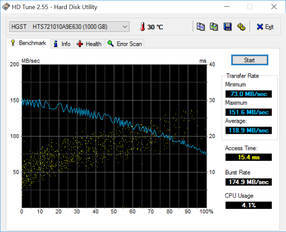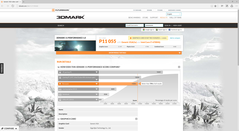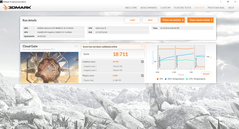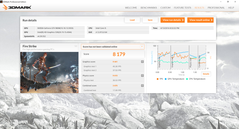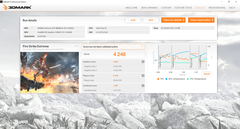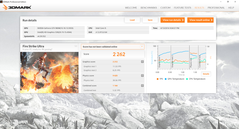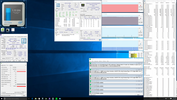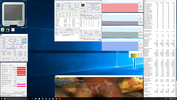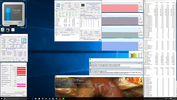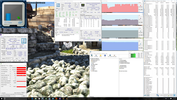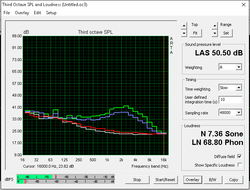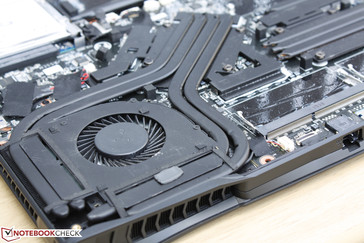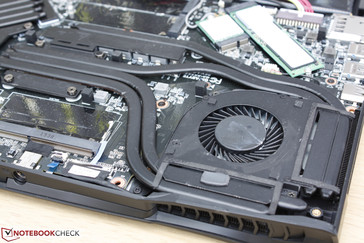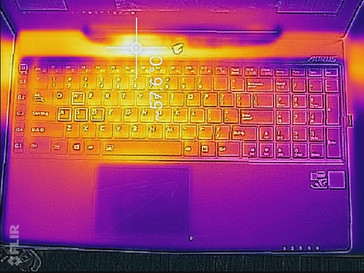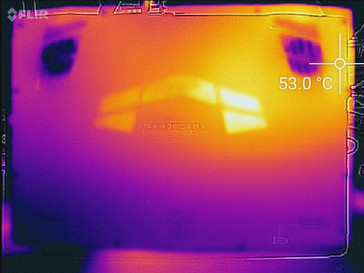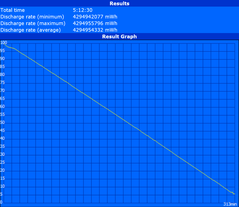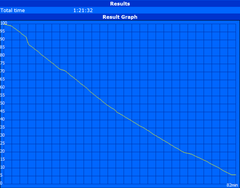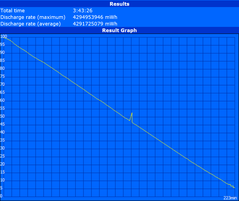Aorus X5S v5 Notebook Review
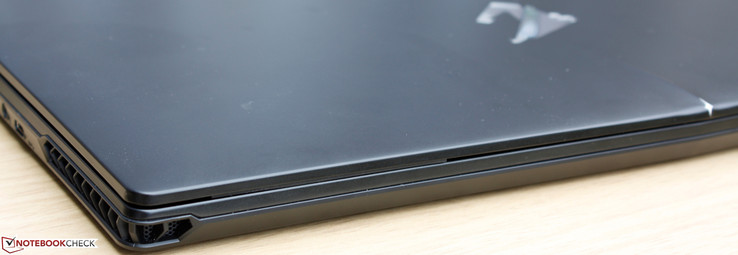
When Aorus launched the original X5, some fans were clamoring about the lack of any SKUs with just a single GPU. What if you liked the system and its features but were turned off by its force-fed SLI?
The Aorus X5S is a direct response to these criticisms as it removes the uncommon GTX 965M SLI in favor of a single GTX 980M. The move required some small internal redesigns as the cooling requirements are not the same, but the X5S is otherwise visually identical to the X5. besides the GPU switch up, Aorus also took the opportunity to update the notebook with Skylake, NVMe, USB Type-C, and other minor changes.
See our original review on the Aorus X5 for more information on its chassis and input features. For this update review, we will focus on the performance of the X5S and how the GTX 980M compares to the GTX 965M SLI that it replaces.
Case
With no major or minor revisions done to the chassis since the X5, users will get the same good and bad qualities with the X5S. The good are mostly visual with the sleek and unique matte styling and magnesium surfaces with the bad being an overall average build quality. The lid in particular feels weak and can creak when subjected to twisting and depressions. The material making up the base feels thin and lacking in rigidity as well. This is, after all, one of the thinnest 15.6-inch notebooks available with the GTX 980M. Construction quality is nonetheless perfect with no unintended gaps between edges and corners.
Connectivity
Available ports are slightly different than on the original X5. Changes include the removal of one USB 3.0 Type-A port in favor of a USB 3.1 Type-C Gen. 2 port, albeit with no native Thunderbolt 3 support. While users will see two HDMI ports, the second HDMI port has no functionality and has a rubber cover placed over it. The first HDMI port has been upgraded from 1.4 to 2.0 for external displays that support the extra features. Port placement is otherwise identical.
It's worth noting that there are no longer any USB Type-A ports on the left edge of the notebook. This can be a hassle for some users with no USB Type-C adapters at hand.
Communication
WLAN and Bluetooth are provided by a dual-band Intel 8260 wireless-ac module capable of transfer rates of up to a theoretical 867 Mbps. In comparison, the original X5 houses an older Intel 7265 module. We experienced no connectivity issues or dropouts during our time with the X5S. WWAN and GPS options are not available on the notebook.
Accessories
Included extras are a cleaning cloth, Quick Start guide, and an 8 GB USB flash drive with drivers and utilities. Aorus sells branded mice, keyboards, and backpacks separately.
Maintenance
Removing the bottom panel is easy and requires a T6 Torx wrench. When compared to the original X5, the X5S has changed the positioning of the WLAN slot and two of the M.2 slots in addition to some other minor adjustments to accommodate the GPU. Note that accessing two of the four DDR4 SODIMM slots will still require additional disassembly.
Warranty
New purchases are covered for two years with the battery covered for only the first year. Furthermore, the manufacturer will cover any stuck pixel within the first 30 days of purchase. Black or "off" pixels, however, are not covered by the standard warranty.
Input Devices
Keyboard
No changes have been made to the keyboard, so users can expect the same experience as on the X5. The individual keys are shallow in travel with relatively quiet and soft feedback. The Space bar in particular could have benefited from deeper travel and firmer feedback as it feels slightly softer than the standard QWERTY keys surrounding it.
Other features include the dedicated column of Macro keys on the left-hand side. These can be cycled in serial between five different user-defined settings to fit the application. Unlike on Asus ROG notebooks where the Macro keys are above the Function keys, the Macro keys here are positioned to be easier to reach with a resting palm.
The standard white keyboard backlight is available in two different intensity levels. There are no options for individually lit keys as on the Lenovo Y900 or Razer Blade Stealth.
Touchpad
The touchpad (10 x 7 cm) is no longer super glossy as found on older generation Aorus models due to complaints from users and the press about its poor gliding properties. The surface is now matte and easier to use than before. Nonetheless, we still experienced issues regarding responsiveness. Gliding a finger across the touchpad at a constant speed will not always translate to smooth cursor movements for unknown reasons. This occurs more frequently on the bottom half of the touchpad, so output is not always consistent either. A dedicated mouse is still recommended over the touchpad for even basic commands.
Meanwhile, the integrated mouse clicks have satisfactory travel with an easy-to-press surface. The problem, however, is that feedback is a bit on the soft side, so inputting multiple clicks in quick succession can be difficult. We find it easier to simply double tap the touchpad surface than to push down on its lower half corners.
Display
While the X5 ships with a 3K 2880 x 1620 resolution panel, the X5S ships with an even denser 4K 3840x2160 resolution panel as the new standard. Images and texts are incredibly sharp on the matte screen with no visible color noise or grains. The same high quality Sharp LQ156D1JW04 panel can also be found on a number of other 15.6-inch notebooks including the Alienware 15, Acer Aspire V15 Nitro Black Edition, and the Clevo P751ZM barebones. Backlight brightness is the same as the X5 despite the denser pixel grid on the X5S. Colors and contrast are measurably better on the updated model as well.
Uneven backlight bleeding occurs to a moderate degree near the top corners and bottom edge. The light bleed is difficult to notice unless if watching movies or playing games where scenes may be dimly lit. Nonetheless, it's an area that could use improvement for future iterations of the notebook.
| |||||||||||||||||||||||||
Brightness Distribution: 90 %
Center on Battery: 324.7 cd/m²
Contrast: 806:1 (Black: 0.403 cd/m²)
ΔE ColorChecker Calman: 2.62 | ∀{0.5-29.43 Ø4.77}
ΔE Greyscale Calman: 2.55 | ∀{0.09-98 Ø5}
92.3% sRGB (Argyll 1.6.3 3D)
59.4% AdobeRGB 1998 (Argyll 1.6.3 3D)
65% AdobeRGB 1998 (Argyll 3D)
92.7% sRGB (Argyll 3D)
63.5% Display P3 (Argyll 3D)
Gamma: 2.11
CCT: 7000 K
| Aorus X5S v5 15.6", 3840x2160 | Aorus X5 15.6", 2880x1620 | HP ZBook 15 G3 15.6", 1920x1080 | MSI GS60-6QE4K16H21 15.6", 3840x2160 | Dell XPS 15-9550 i7 15.6", 3840x2160 | |
|---|---|---|---|---|---|
| Display | -5% | 5% | -15% | 33% | |
| Display P3 Coverage (%) | 63.5 | 61.5 -3% | 66.8 5% | 53.1 -16% | 87.8 38% |
| sRGB Coverage (%) | 92.7 | 85.7 -8% | 95.5 3% | 80 -14% | 100 8% |
| AdobeRGB 1998 Coverage (%) | 65 | 61.8 -5% | 69 6% | 54.8 -16% | 99.4 53% |
| Response Times | -15% | 16% | -19% | ||
| Response Time Grey 50% / Grey 80% * (ms) | 41.2 ? | 54 ? -31% | 40 ? 3% | 58 ? -41% | |
| Response Time Black / White * (ms) | 36 ? | 35.6 ? 1% | 26 ? 28% | 35 ? 3% | |
| PWM Frequency (Hz) | 198 ? | 198 ? | 1316 ? | ||
| Screen | -16% | -39% | -54% | -11% | |
| Brightness middle (cd/m²) | 324.7 | 324.3 0% | 306 -6% | 212 -35% | 361 11% |
| Brightness (cd/m²) | 324 | 317 -2% | 289 -11% | 197 -39% | 344 6% |
| Brightness Distribution (%) | 90 | 87 -3% | 85 -6% | 78 -13% | 90 0% |
| Black Level * (cd/m²) | 0.403 | 0.553 -37% | 0.34 16% | 0.49 -22% | 0.38 6% |
| Contrast (:1) | 806 | 586 -27% | 900 12% | 433 -46% | 950 18% |
| Colorchecker dE 2000 * | 2.62 | 3.53 -35% | 5.1 -95% | 7.8 -198% | 5.34 -104% |
| Colorchecker dE 2000 max. * | 4.59 | 9.9 -116% | |||
| Greyscale dE 2000 * | 2.55 | 3.12 -22% | 7.4 -190% | 5.23 -105% | 4.84 -90% |
| Gamma | 2.11 104% | 2.28 96% | 2.37 93% | 3.05 72% | 2.21 100% |
| CCT | 7000 93% | 6600 98% | 7263 89% | 6693 97% | 7395 88% |
| Color Space (Percent of AdobeRGB 1998) (%) | 59.4 | 55.4 -7% | 63 6% | 50 -16% | 89 50% |
| Color Space (Percent of sRGB) (%) | 92.3 | 85.2 -8% | 95 3% | 80 -13% | 100 8% |
| Total Average (Program / Settings) | -11% /
-13% | -16% /
-27% | -18% /
-36% | 1% /
-2% |
* ... smaller is better
Color coverage is a measured 92.3 percent and 59.4 percent of the sRGB and AdobeRGB standards, respectively. This is indicative of a high-end panel at work and is actually quite similar to the 3K panel as found on the X5. Competing models like the GS60 cover a narrower gamut while a few others like the XPS 15 9550 aim for the wider AdobeRGB gamut. Though good for digital artists, the deeper colors aren't necessarily more important than other factors like response times for gaming purposes.
Color analyses with an X-Rite spectrophotometer reveal very accurate colors and grayscale without any calibration needed. A quick calibration will improve all properties just slightly. The panel here is already more accurate than most other notebooks out-of-the-box.
Display Response Times
| ↔ Response Time Black to White | ||
|---|---|---|
| 36 ms ... rise ↗ and fall ↘ combined | ↗ 17.2 ms rise | |
| ↘ 18.8 ms fall | ||
| The screen shows slow response rates in our tests and will be unsatisfactory for gamers. In comparison, all tested devices range from 0.1 (minimum) to 240 (maximum) ms. » 93 % of all devices are better. This means that the measured response time is worse than the average of all tested devices (20.2 ms). | ||
| ↔ Response Time 50% Grey to 80% Grey | ||
| 41.2 ms ... rise ↗ and fall ↘ combined | ↗ 20 ms rise | |
| ↘ 21.2 ms fall | ||
| The screen shows slow response rates in our tests and will be unsatisfactory for gamers. In comparison, all tested devices range from 0.165 (minimum) to 636 (maximum) ms. » 65 % of all devices are better. This means that the measured response time is worse than the average of all tested devices (31.6 ms). | ||
Screen Flickering / PWM (Pulse-Width Modulation)
| Screen flickering / PWM detected | 198 Hz | ≤ 20 % brightness setting | |
The display backlight flickers at 198 Hz (worst case, e.g., utilizing PWM) Flickering detected at a brightness setting of 20 % and below. There should be no flickering or PWM above this brightness setting. The frequency of 198 Hz is relatively low, so sensitive users will likely notice flickering and experience eyestrain at the stated brightness setting and below. In comparison: 53 % of all tested devices do not use PWM to dim the display. If PWM was detected, an average of 8084 (minimum: 5 - maximum: 343500) Hz was measured. | |||
Outdoor visibility is average at best. The display backlight was not designed to be powerful enough to overcome outdoor ambient lighting and glare despite the matte panel. Thus, users will be treated to a washed out screen with hard-to-see content especially if not scaled correctly against the high native resolution.
Viewing angles are excellent as expected from an IPS panel. Colors and contrast do not significantly degrade even if viewing from extreme angles. Apparent brightness drops only slightly if not looking directly in front of the display.
Performance
Aside from the obvious GPU changes, jumping from the X5 to the X5S brings the system up from Broadwell to Skylake and from DDR3 to DDR4 for up to double the maximum RAM. The X5S carries Optimus and no G-Sync for graphics switching with the integrated HD Graphics 530. The opposite is true on the older X5 model where G-Sync comes standard with no Optimus options since the two technologies are still mutually exclusive as of this writing.
Processor
CPU performance from the i7-6700HQ is where we expect it to be for a processor of its class. Thus, performance advantages against the previous generation i7-5700HQ or even i7-4700HQ are minimal since the generational gaps between them are more defined by the jumps in integrated GPU performance rather than raw CPU power. A "proper" desktop i7-6700K is still roughly 20 to 30 percent faster than the Core i7-6700HQ according to CineBench benchmarks while having over twice the TDP (45 W vs. 91 W).
See our dedicated CPU page on the Core i7-6700HQ for more information and benchmarks.
| Cinebench R15 | |
| CPU Single 64Bit (sort by value) | |
| Aorus X5S v5 | |
| DogHouse Systems Mobius SS | |
| MSI GT72S 6QE-071PL | |
| MSI GE62 2QC-468XPL | |
| Clevo P150SM-A | |
| CPU Multi 64Bit (sort by value) | |
| Aorus X5S v5 | |
| DogHouse Systems Mobius SS | |
| MSI GT72S 6QE-071PL | |
| MSI GE62 2QC-468XPL | |
| Clevo P150SM-A | |
| Cinebench R11.5 | |
| CPU Single 64Bit (sort by value) | |
| Aorus X5S v5 | |
| DogHouse Systems Mobius SS | |
| MSI GT72S 6QE-071PL | |
| MSI GE62 2QC-468XPL | |
| Clevo P150SM-A | |
| CPU Multi 64Bit (sort by value) | |
| Aorus X5S v5 | |
| DogHouse Systems Mobius SS | |
| MSI GT72S 6QE-071PL | |
| MSI GE62 2QC-468XPL | |
| Clevo P150SM-A | |
| Cinebench R10 | |
| Rendering Multiple CPUs 32Bit (sort by value) | |
| Aorus X5S v5 | |
| DogHouse Systems Mobius SS | |
| MSI GT72S 6QE-071PL | |
| MSI GE62 2QC-468XPL | |
| Clevo P150SM-A | |
| Rendering Single 32Bit (sort by value) | |
| Aorus X5S v5 | |
| DogHouse Systems Mobius SS | |
| MSI GT72S 6QE-071PL | |
| MSI GE62 2QC-468XPL | |
| Clevo P150SM-A | |
| wPrime 2.10 - 1024m (sort by value) | |
| Aorus X5S v5 | |
| DogHouse Systems Mobius SS | |
| MSI GT72S 6QE-071PL | |
| MSI GE62 2QC-468XPL | |
| Clevo P150SM-A | |
| Super Pi Mod 1.5 XS 32M - 32M (sort by value) | |
| Aorus X5S v5 | |
| DogHouse Systems Mobius SS | |
| MSI GT72S 6QE-071PL | |
| MSI GE62 2QC-468XPL | |
| Clevo P150SM-A | |
* ... smaller is better
System Performance
PCMark 8 ranks the X5S in the same ballpark as other gaming systems equipped with a similar CPU and GPU. The exception is the recent Asus G752VY, which ranks unusually high in the same benchmark tests. The original Aorus X5 returns higher scores as well. In practice, however, the system is responsive and without any noticeable hiccups. We experienced no hardware or software issues specific to the Aorus during our time with the notebook.
| PCMark 8 | |
| Home Score Accelerated v2 (sort by value) | |
| Aorus X5S v5 | |
| Asus G752VY-RH71 | |
| Aorus X5 | |
| Alienware 15 R2 (Skylake) | |
| Gigabyte P35X v5 | |
| MSI GS60-6QE4K16H21 | |
| Work Score Accelerated v2 (sort by value) | |
| Aorus X5S v5 | |
| Asus G752VY-RH71 | |
| Aorus X5 | |
| Alienware 15 R2 (Skylake) | |
| Gigabyte P35X v5 | |
| Creative Score Accelerated v2 (sort by value) | |
| Aorus X5S v5 | |
| Asus G752VY-RH71 | |
| Aorus X5 | |
| Alienware 15 R2 (Skylake) | |
| PCMark 8 Home Score Accelerated v2 | 3260 points | |
| PCMark 8 Creative Score Accelerated v2 | 4747 points | |
| PCMark 8 Work Score Accelerated v2 | 3937 points | |
Help | ||
Storage Devices
Users get a total of four storage bays (3x M.2 2280, 1x 2.5-inch SATA III) with NVMe speeds available on the first M.2 slot. This is an upgrade from the original X5, which was limited to SATA III transfer rates. Our data below shows that a single NVMe drive in the X5S can already outperform two SATA III SSDs in RAID 0. Competing models like the GS60 or Predator 15 tend to offer fewer internal storage bays than the X5S.
Performance from the NVMe Samsung SSD is significantly faster than on notebooks with only the SATA III interface. More high-end gaming notebooks and multimedia notebooks like the Asus UX501 or XPS 15 9550 are incorporating the new interface standard due to its performance advantages. Meanwhile, the 7200 RPM Hitachi HDD provides a fast average transfer rate of just under 119 MB/s according to HD Tune.
See our growing list of HDDs and SSDs for more comparisons and benchmarks.
April 25, 2016 update: Aorus has informed us that RAID support has been brought back in a new BIOS update for the X5S.
| Aorus X5S v5 GeForce GTX 980M, 6700HQ, Samsung SM951 MZVPV256 m.2 | Aorus X5 GeForce GTX 965M SLI, 5700HQ, 2x Lite-On IT L8T-256L9G (RAID 0) | HP ZBook 15 G3 Quadro M2000M, E3-1505M v5, Samsung SM951 MZVPV512HDGL m.2 PCI-e | MSI GS60-6QE4K16H21 GeForce GTX 970M, 6700HQ, Hynix HFS256G3MND | Acer Predator 15 G9-591-74ZV GeForce GTX 980M, 6700HQ, Lite-On CV1-8B256 | |
|---|---|---|---|---|---|
| AS SSD | -16% | 19% | -71% | -53% | |
| Copy Game MB/s (MB/s) | 688 | 705 2% | 1023 49% | 348.4 -49% | |
| Copy Program MB/s (MB/s) | 357.9 | 327.5 -8% | 585 63% | 243.6 -32% | |
| Copy ISO MB/s (MB/s) | 1319 | 894 -32% | 1494 13% | 391.3 -70% | |
| Score Total (Points) | 2433 | 1618 -33% | 2495 3% | 998 -59% | 826 -66% |
| Score Write (Points) | 509 | 730 43% | 548 8% | 352 -31% | 316 -38% |
| Score Read (Points) | 1298 | 584 -55% | 1302 0% | 425 -67% | 337 -74% |
| Access Time Write * (ms) | 0.032 | 0.046 -44% | 0.024 25% | 0.112 -250% | 0.05 -56% |
| Access Time Read * (ms) | 0.049 | 0.051 -4% | 0.031 37% | 0.089 -82% | 0.063 -29% |
| 4K-64 Write (MB/s) | 290.8 | 565 94% | 257 -12% | 232.2 -20% | 212.3 -27% |
| 4K-64 Read (MB/s) | 1059 | 457.8 -57% | 1066 1% | 344.7 -67% | 257.4 -76% |
| 4K Write (MB/s) | 115.9 | 79.7 -31% | 173.1 49% | 80.9 -30% | 71.5 -38% |
| 4K Read (MB/s) | 45.81 | 32.68 -29% | 52.5 15% | 28.77 -37% | 28.16 -39% |
| Seq Write (MB/s) | 1019 | 857 -16% | 1181 16% | 389.3 -62% | 324.1 -68% |
| Seq Read (MB/s) | 1925 | 932 -52% | 1841 -4% | 516 -73% | 513 -73% |
* ... smaller is better
GPU Performance
| 3DMark 11 | |
| 1280x720 Performance (sort by value) | |
| Aorus X5S v5 | |
| Eurocom Sky DLX7 | |
| Aorus X5 | |
| Gigabyte P57W | |
| Alienware 15 (R9 M295X) | |
| 1280x720 Performance GPU (sort by value) | |
| Aorus X5S v5 | |
| Eurocom Sky DLX7 | |
| Aorus X5 | |
| Gigabyte P57W | |
| Alienware 15 (R9 M295X) | |
| 3DMark | |
| 1920x1080 Fire Strike Score (sort by value) | |
| Aorus X5S v5 | |
| Eurocom Sky DLX7 | |
| Aorus X5 | |
| Gigabyte P57W | |
| Alienware 15 (R9 M295X) | |
| 3840x2160 Fire Strike Ultra Graphics (sort by value) | |
| Aorus X5S v5 | |
| Eurocom Sky DLX7 | |
| Alienware 15 (R9 M295X) | |
| Fire Strike Extreme Graphics (sort by value) | |
| Aorus X5S v5 | |
| Eurocom Sky DLX7 | |
| Aorus X5 | |
| 1920x1080 Fire Strike Graphics (sort by value) | |
| Aorus X5S v5 | |
| Eurocom Sky DLX7 | |
| Aorus X5 | |
| Gigabyte P57W | |
| Alienware 15 (R9 M295X) | |
| Fire Strike Extreme Combined (sort by value) | |
| Aorus X5S v5 | |
| Eurocom Sky DLX7 | |
| Aorus X5 | |
| Fire Strike Extreme Score (sort by value) | |
| Aorus X5S v5 | |
| Eurocom Sky DLX7 | |
| Aorus X5 | |
| 1920x1080 Fire Strike Combined (sort by value) | |
| Aorus X5S v5 | |
| Eurocom Sky DLX7 | |
| Aorus X5 | |
| Gigabyte P57W | |
| Alienware 15 (R9 M295X) | |
| 3DMark 11 Performance | 11055 points | |
| 3DMark Ice Storm Standard Score | 52105 points | |
| 3DMark Cloud Gate Standard Score | 18711 points | |
| 3DMark Fire Strike Score | 8179 points | |
| 3DMark Fire Strike Extreme Score | 4248 points | |
Help | ||
Gaming Performance
While the synthetic 3DMark benchmarks show that the GTX 965M SLI is marginally faster than a single GTX 980M in raw horsepower, real-world games typically favor single GPU systems since they introduce no scaling issues. Indeed, the Aorus X5S will sometimes outperform the GTX 965M SLI depending on the title.
As for native 4K gaming, it's going to take more than a single GTX 980M to run modern titles at acceptable frame rates without first turning down graphical features to Medium or below. In this case, a 2K or 3K option for the X5S may not have been a bad idea. As mentioned earlier, G-Sync is unfortunately not supported on the X5S where it would have paired up very nicely with the 4K UHD panel.
See our dedicated GPU page on the GTX 980M for more benchmarks and comparisons.
| Thief - 1920x1080 Very High Preset AA:FXAA & High SS AF:8x | |
| Eurocom Sky DLX7 | |
| Aorus X5S v5 | |
| Aorus X5 | |
| Aorus X3 Plus v5 | |
| Alienware 15 (R9 M295X) | |
| Sleeping Dogs - 1920x1080 Extreme Preset AA:Extreme | |
| Eurocom Sky DLX7 | |
| Aorus X5 | |
| Aorus X5S v5 | |
| Aorus X3 Plus v5 | |
| BioShock Infinite - 1920x1080 Ultra Preset, DX11 (DDOF) | |
| Eurocom Sky DLX7 | |
| Aorus X5 | |
| Aorus X5S v5 | |
| Aorus X3 Plus v5 | |
| Alienware 15 (R9 M295X) | |
| Metro: Last Light - 1920x1080 Very High (DX11) AF:16x | |
| Aorus X5S v5 | |
| Aorus X5 | |
| Aorus X3 Plus v5 | |
| Alienware 15 (R9 M295X) | |
| Batman: Arkham Knight | |
| 1920x1080 High / On AA:SM AF:16x | |
| Eurocom Sky DLX7 | |
| Aorus X5S v5 | |
| Aorus X5 | |
| 3840x2160 High / On (Interactive Smoke & Paper Debris Off) AA:SM AF:8x | |
| Eurocom Sky DLX7 | |
| Aorus X5S v5 | |
| Fallout 4 | |
| 1920x1080 Ultra Preset AA:T AF:16x | |
| Aorus X5S v5 | |
| Aorus X3 Plus v5 | |
| 3840x2160 High Preset AA:T AF:16x | |
| Aorus X5S v5 | |
| Rise of the Tomb Raider | |
| 1920x1080 Very High Preset AA:FX AF:16x | |
| Aorus X5S v5 | |
| 3840x2160 High Preset AA:FX AF:4x | |
| Aorus X5S v5 | |
| low | med. | high | ultra | 4K | |
|---|---|---|---|---|---|
| Sleeping Dogs (2012) | 136.5 | 58.6 | |||
| BioShock Infinite (2013) | 156.6 | 87 | |||
| Metro: Last Light (2013) | 109.9 | 66.5 | |||
| Thief (2014) | 91.2 | 62.1 | |||
| Batman: Arkham Knight (2015) | 75 | 48 | 19 | ||
| Metal Gear Solid V (2015) | 60 | 60 | 33.4 | ||
| Fallout 4 (2015) | 58.8 | 55.3 | 23.5 | ||
| Rise of the Tomb Raider (2016) | 58.2 | 47.1 | 22.4 |
Stress Test
The Core i7-6700HQ is able to maintain its rated 3.1 GHz maximum for all active cores when under Prime95 stress and even simultaneous Prime95+FurMark stress. Core temperature averages about 80 C while the GPU settles at even higher temperatures nearing 90 C.
Running Unigine Heaven is more representative of gaming loads. Consistent CPU Turbo is not required under these conditions, so the core fluctuates at much lower temperatures in the 45 to 60 C range depending on the onscreen demand. The GPU maintains a maximum Boost speed of 1126 MHz (against a base clock speed of 1038 MHz) with core temperatures in the very warm mid 80 C range.
Running on batteries will limit GPU power while having only a minimal impact on the CPU. A 3DMark 11 benchmark run on battery power returned Physics and Graphics scores of 8303 points and 9977 points, respectively, compared to 8746 points and 12197 points when on mains.
| CPU Clock (GHz) | GPU Clock (MHz) | Average CPU Temperature (C) | Average GPU Temperature (C) | |
Prime95 Stress |
3.1 | -- | ~80 | -- |
FurMark Stress |
-- | 860 | -- | ~87 |
Prime95 + FurMark Stress |
3.1 | 810 | ~78 | ~86 |
Unigine Heaven Stress |
2.4+ | 1126 | ~47 | ~83 |
Emissions
System Noise
The altered cooling system still utilizes the same 50 mm fans as the X5 with similar fan behavior. The fans never idle and are always audible even when on the Power Saver profile. Fan speed increases in discrete steps in response to onscreen demand; We were able to record a steady fan noise of about 50 dB(A) when running Unigine Heaven and 54 dB(A) when running both Prime95 and FurMark simultaneously.
Compared to other notebooks, the 50 dB(A) range when gaming is quite loud and can be bothersome without earphones. Competing notebooks with the same GTX 980M GPU like the Asus G752 or Eurocom P5 Pro tend to hover in the low to mid 40 dB(A) range under the same conditions, albeit such systems tend to be much thicker and larger as well. In short, Gigabyte and Aorus are notorious for offering very thin and lightweight gaming notebooks at the cost of fan noise and heat.
| Aorus X5S v5 GeForce GTX 980M, 6700HQ, Samsung SM951 MZVPV256 m.2 | Aorus X5 GeForce GTX 965M SLI, 5700HQ, 2x Lite-On IT L8T-256L9G (RAID 0) | HP ZBook 15 G3 Quadro M2000M, E3-1505M v5, Samsung SM951 MZVPV512HDGL m.2 PCI-e | MSI GS60-6QE4K16H21 GeForce GTX 970M, 6700HQ, Hynix HFS256G3MND | Acer Predator 15 G9-591-74ZV GeForce GTX 980M, 6700HQ, Lite-On CV1-8B256 | |
|---|---|---|---|---|---|
| Noise | 3% | 8% | 2% | 2% | |
| off / environment * (dB) | 28.3 | 30 -6% | |||
| Idle Minimum * (dB) | 34.3 | 32.5 5% | 30 13% | 35 -2% | 31 10% |
| Idle Average * (dB) | 34.4 | 32.6 5% | 30 13% | 36 -5% | 32 7% |
| Idle Maximum * (dB) | 34.4 | 34.4 -0% | 30 13% | 37 -8% | 42 -22% |
| Load Average * (dB) | 50 | 44 12% | 45.3 9% | 40 20% | 47 6% |
| Load Maximum * (dB) | 54 | 56.8 -5% | 49.7 8% | 50 7% | 48 11% |
* ... smaller is better
Noise level
| Idle |
| 34.3 / 34.4 / 34.4 dB(A) |
| Load |
| 50 / 54 dB(A) |
 | ||
30 dB silent 40 dB(A) audible 50 dB(A) loud |
||
min: | ||
Temperature
Surface temperatures are flat when idling and slightly warmer towards the center of the keyboard since the processors are positioned directly underneath. Running on maximum load will warm up the center areas of the notebook with the GPU side being warmer than the CPU side. When taken as an average, the X5S isn't significantly warmer or cooler than the Predator 15 or Alienware 15, but still much cooler than the X5 and super-thin MSI GS60 under similar stress testing conditions. The palm rests and frontal quadrants remain relatively cool since only the battery and HDD take up this space.
(-) The maximum temperature on the upper side is 57.6 °C / 136 F, compared to the average of 40.4 °C / 105 F, ranging from 21.2 to 68.8 °C for the class Gaming.
(-) The bottom heats up to a maximum of 53 °C / 127 F, compared to the average of 43.3 °C / 110 F
(+) In idle usage, the average temperature for the upper side is 28 °C / 82 F, compared to the device average of 33.9 °C / 93 F.
(+) The palmrests and touchpad are reaching skin temperature as a maximum (34.4 °C / 93.9 F) and are therefore not hot.
(-) The average temperature of the palmrest area of similar devices was 28.8 °C / 83.8 F (-5.6 °C / -10.1 F).
Speakers
The 2.1 speakers with dedicated 2 W subwoofer give the same quality sound as on the original X5. That is, the subwoofer provides a small level of bass for a better balance compared to systems with only a stereo setup. Earphones are still recommended for gaming due to the loud fan noise and it would have been nice if the X5S had included a dedicated SPDIF port for optical out capabilities.
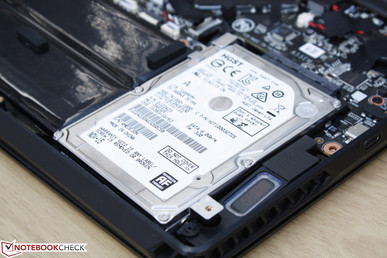
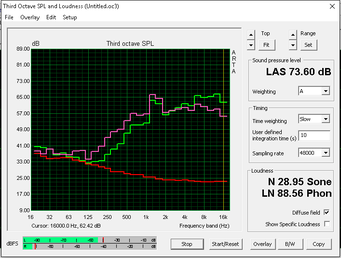
Energy Management
Power Consumption
Power demand from the X5S is very high and noticeably more demanding than other GTX 980M notebooks including the Predator 15 and Alienware 15 R2. In particular, the system is wasteful and draws more than 9 W of power even when turned completely off. The system demands around 130 W when gaming.
Maximum load with Prime95 and FurMark will entail about 216 W of power. The power adapter itself measures roughly 17 x 9.5 x 2.5 cm.
| Aorus X5S v5 GeForce GTX 980M, 6700HQ, Samsung SM951 MZVPV256 m.2 | HP ZBook 15 G3 Quadro M2000M, E3-1505M v5, Samsung SM951 MZVPV512HDGL m.2 PCI-e | MSI GS60-6QE4K16H21 GeForce GTX 970M, 6700HQ, Hynix HFS256G3MND | Dell XPS 15-9550 i7 GeForce GTX 960M, 6700HQ, Samsung PM951 NVMe 512 GB | Acer Predator 15 G9-591-74ZV GeForce GTX 980M, 6700HQ, Lite-On CV1-8B256 | Alienware 15 R2 (Skylake) GeForce GTX 980M, 6700HQ, Samsung PM951 NVMe MZ-VLV256D | |
|---|---|---|---|---|---|---|
| Power Consumption | 54% | 27% | 38% | 36% | 34% | |
| Idle Minimum * (Watt) | 27.4 | 5.7 79% | 17 38% | 12.5 54% | 12 56% | 11.4 58% |
| Idle Average * (Watt) | 30.7 | 12.2 60% | 22 28% | 19.6 36% | 16 48% | 16.5 46% |
| Idle Maximum * (Watt) | 31.2 | 12.6 60% | 28 10% | 22.8 27% | 22 29% | 22 29% |
| Load Average * (Watt) | 130.4 | 83.1 36% | 91 30% | 102 22% | 100 23% | 94.2 28% |
| Load Maximum * (Watt) | 216.6 | 138.2 36% | 149 31% | 107 51% | 162 25% | 192.2 11% |
* ... smaller is better
| Off / Standby | |
| Idle | |
| Load |
|
Key:
min: | |
Battery Life
The move from SLI to a single GPU setup has made no changes to the 73.26 Wh battery capacity. As expected, battery life is significantly longer than the X5 since there are no longer two GPUs to power. Even so, overall runtimes are below average and shorter than 4 hours when under WLAN conditions. Other 15-inch notebooks with discrete GPUs tend to run for longer including the XPS 15 9550 and Acer Predator 15.
Charging from near empty to full capacity will take roughly 2 to 2.5 hours.
| Aorus X5S v5 73 Wh | Aorus X5 73 Wh | HP ZBook 15 G3 90 Wh | MSI GS60-6QE4K16H21 47 Wh | Dell XPS 15 2016 9550 56 Wh | Acer Predator 15 G9-591-74ZV 90 Wh | |
|---|---|---|---|---|---|---|
| Battery runtime | -29% | 88% | -30% | 63% | 76% | |
| Reader / Idle (h) | 5.2 | 2.8 -46% | 13.7 163% | 3.6 -31% | 9.1 75% | 11.2 115% |
| WiFi v1.3 (h) | 3.7 | 1.9 -49% | 6.4 73% | 2.6 -30% | 5.5 49% | |
| Load (h) | 1.4 | 1.5 7% | 1.8 29% | 1 -29% | 2.3 64% | 1.9 36% |
Pros
Cons
Verdict
The Aorus X5S is a sizable leap over the X5, but not without taking a few small steps back in the process. All the new upgrades are no doubt appreciated including DDR4, NVMe, USB Type-C, and the move from GTX 965M SLI to a single GTX 980M. The latter in particular proves that there's little to no reason to opt for a weaker SLI setup when gaming on one stronger GPU can deliver comparable results. It's hard to recommend the X5 over the X5S for this reason alone.
While battery life is up and surface temperatures are down as a direct result from the GPU changes, other factors like fan noise have not improved and can still be loud enough to be distracting when gaming. More display options like 2K or 3K resolutions with G-Sync support could have made for a more balanced notebook considering the GTX 980M GPU. For future iterations, we would like to see improvements on the keyboard and touchpad and on other characteristics like case rigidity, backlight bleeding, response times, and system noise.
Packing a GTX 980M in a thin 15.6-inch chassis entails some sacrifices including louder fan noise and a weaker case. Users who absolutely do not want larger and heavier gaming notebooks will find a lot to like about the Aorus X5S as long as they are aware of its drawbacks.
Aorus X5S v5
- 05/04/2016 v5.1 (old)
Allen Ngo




